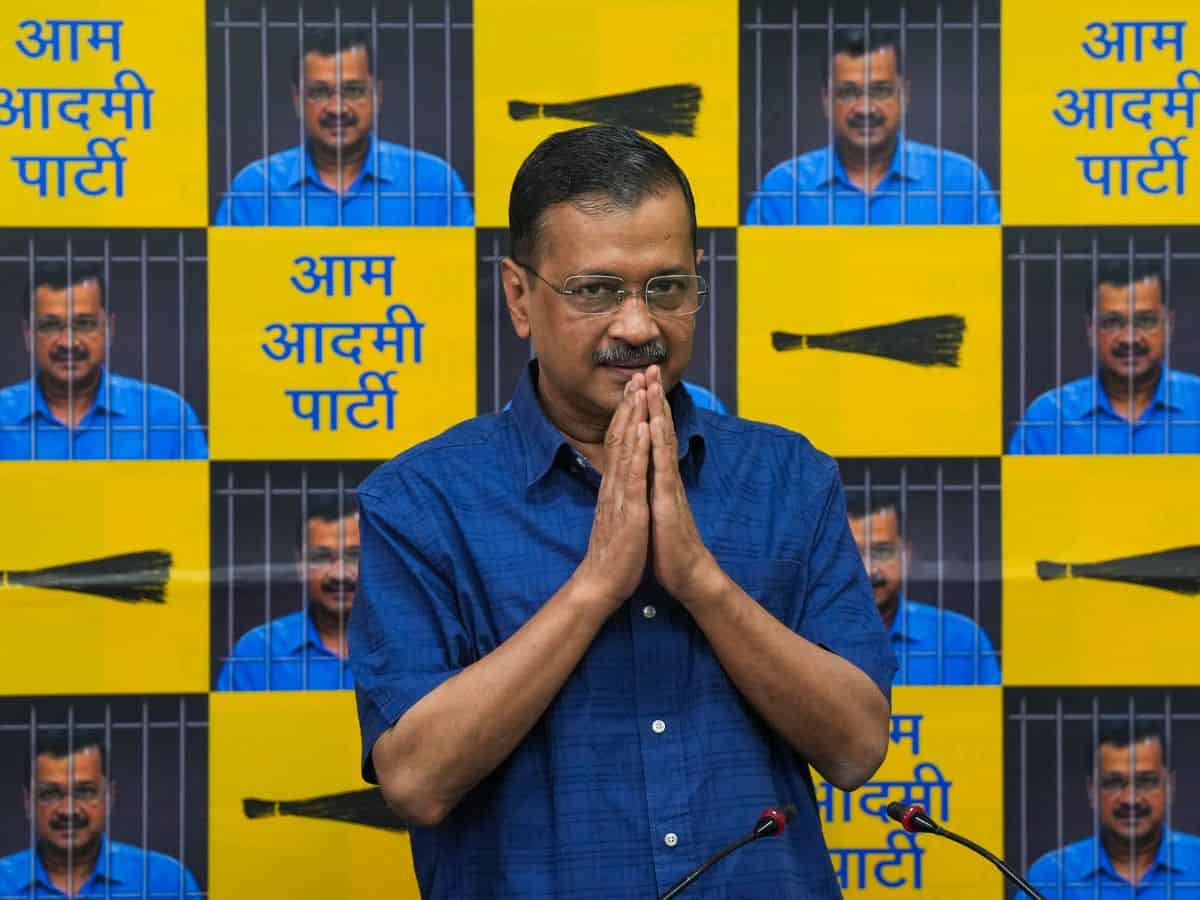
Delhi’s Chief Minister, Arvind Kejriwal, has overcome numerous obstacles in the past decade. Yet, his unwavering resilience has been a beacon of inspiration. He and his party are currently facing the biggest crisis in the liquor policy case.
Despite the challenges, Kejriwal’s political journey is a testament to his indomitable spirit. From brief 49-day tenure and losing all seven seats in Delhi in 2014, he orchestrated a remarkable comeback, securing 67 out of 70 seats in the 2015 Delhi Assembly polls.
The arrest of Kejriwal in the Delhi liquor policy case last month, which involves allegations of corruption and misuse of power, has cast a shadow of uncertainty over the future of the Aam Aadmi Party. Will this be the end of the party’s road, or can they weather this storm and continue their political journey?
The Apex court’s decision to grant bail to Kejriwal, allowing him to campaign for his party in the ongoing elections, is a beacon of hope for Kejriwal’s supporters. This positive development paves the way for Kejriwal’s success, especially if he garners public sympathy.
Kejriwal presents himself as the underdog, highlighting Prime Minister Narendra Modi’s alleged persecution and his colleagues’ imprisonment. Kejriwal and his party have been trying to show the public how he was mistreated in prison and how he was denied insulin and his diabetes medication.
Kejriwal’s arrest is the biggest crisis for the Aam Aadmi Party (AAP) since its founding in November 2012. The party has faced numerous challenges, including internal conflicts, allegations of corruption, and the need to maintain its image as a party for the common man. Over the years, many of Kejriwal’s associates from the India Against Corruption (IAC) days have been dumped. Kejriwal has introduced a personality cult centred around him.
The Aam Aadmi Party’s rise to power has been quite dramatic. It originated from the India Against Corruption movement led by Anna Hazare in 2012. The party came into power within months, but Kejriwal’s resignation within 48 hours was unsurprising. However, he returned in 2015 and 2019, winning the Delhi Assembly polls with a significant majority. These events have sparked curiosity about the party’s political trajectory and Kejriwal’s resilience.
Kejriwal has always been ambitious. He positioned himself as a prime ministerial candidate and even ran against Modi in Benares in 2014 but lost. This bold move significantly boosted Kejriwal’s and his party’s profile.
In the recently formed I N D I A coalition, a significant political alliance that aims to challenge the dominance of the BJP, the AAP stands out as the only party other than Congress to rule more than one state. This alliance could pave the way for his party’s expansion beyond Delhi and Punjab.
However, currently, AAP will have a significant political impact in only 20 constituencies. Kejriwal’s national influence depends on his party’s performance.
The AAP currently holds one seat in the Lok Sabha and ten in the Upper House. The party has expanded its influence to other states and was granted national party status in April 2023.
The Aam Aadmi Party’s rise to power in Indian politics is fascinating. Unlike the BJP or the Left parties, it has no solid ideological stance. It has not relied on regional or socialist backgrounds like the AIADMK, DMK, Samajwadi Party, Biju Janata Dal, or Rashtriya Janata Dal. Instead, it has gained power by championing development and the freebie culture.
The AAP is now contesting elections in Delhi with the Congress party, while in Punjab it is contesting 13 seats independently. These alliances offer a promising outlook for Kejriwal’s political journey.
The Aam Aadmi Party is not just a political entity. It is poised to fill the void left by Congress and target politically bipolar states like Himachal Pradesh, Haryana, Rajasthan, and Gujarat.
Modi has promised a “Modi ki guarantee,” while Kejriwal has outlined a ten-point agenda. This agenda includes “freeing” Indian land from Chinese occupation if the INDIA bloc forms the government at the Centre, attaining statehood for Delhi, ensuring a 24/7 power supply, and providing free education. These promises reflect Kejriwal’s focus on national issues.
The Delhi liquor policy case has become inconvenient for the AAP and convenient for the BJP as elections are underway. It raises questions like, is it the end of the road? Can the second rung of leaders like Gopal Rai, Saurabh Bhardwaj, Sandeep Pathak, Raghav Chadha, and Atishi Run the party, or will Kejriwal, with his usual luck, return?
Kejriwal is optimistic and hopes that luck will be on his side. This positive outlook has served him well so far.
His popularity will rise if his party secures a respectable number of seats in the current Lok Sabha polls. Only the voters can decide, and their decision will shape the future of Kejriwal and the Aam Aadmi Party in Indian politics.
